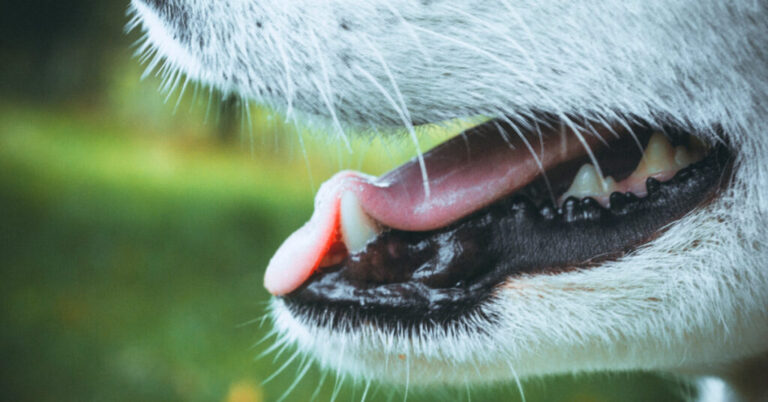Dog Having Seizure: What To Do
Your normally joyful dog appears shaky and confused. They then collapse on the ground.
They appear to be treading water, despite the fact that they are unaware of what is going on.
They’re experiencing a seizure. What is causing this, and what can you do about it?
What is a Seizure?

One of the most commonly reported neurological disorders in dogs is seizures. A seizure, also known as a convulsion or a fit.
It is an uncontrolled disruption of normal brain function that is often accompanied by uncontrollable muscular movement.
Seizures might seem as a twitch or uncontrollable shaking and last anywhere from a few seconds to several minutes.
Epilepsy is a word used to describe cluster seizures. In epilepsy, seizures can be single or clustered, and they can be uncommon and unpredictable or happen at regular intervals.
If your dog is experiencing or has just had a seizure, write down as many facts as you can recall and schedule an appointment with your veterinarian.
What Causes Seizures in Dogs?

Seizures can be caused by a variety of factors. The most common cause of seizures in dogs is idiopathic epilepsy, which is a hereditary disease with no known cause.
Liver illness, renal failure, brain tumors, brain trauma, and poisons are some of the other reasons.
Seizures are more likely to happen when the dog’s brain activity is changing, such as during excitement or eating, or when the dog is going to sleep or waking up.
Between seizures, affected dogs might seem totally normal.
Signs of Seizures in Dogs

Signs of seizures in dogs include:
- Going around in circles
- Jerking
- Muscle spasms
- loss of consciousness
- Can’t make eye contact
- Drooling
- Chewing their tongue
- Foaming at the mouth
- Uncontrollable urination or defecation
- Standing still while staring blankly
What Happens During a Dog Seizure?

Seizures occur in three parts:
The Pre-ictal Phase (aura)
It is characterized by a period of changed behavior in which the dog may hide, look anxious, or seek out the owner. It might be agitated, jittery, whimpering, shaking, or salivating.
This might last anything from a few seconds to several hours. This time occurs before the seizure activity, as though the dog is anticipating something.
The Ictal Phase
The ictal phase can continue anywhere from a few seconds to many minutes, and the appearance of the ictal phase can change.
The ictal phase can range from minor changes in mental awareness, such as a dazed appearance, slight shivering, aimless gazing, or licking lips, to full loss of consciousness and physical function.
When a dog has a grand mal seizure with loss of consciousness, all of the muscles in his body irregularly move.
The dog generally collapses on its side and paddles its legs, appearing to be paralyzed otherwise.
The head is frequently drawn backwards. Urination, feces, and salivation are all possible outcomes.
The dog is considered to be in status epilepticus, or extended seizure, if the episode does not stop within five minutes.
Post-ictal Phase
Confusion, disorientation, salivation, pacing, restlessness, and even momentary blindness can occur during the post-ictal phase, which occurs shortly after the seizure ends.
The duration of the post-ictal period has no direct relationship with the severity of the seizure.
What to Do if Your Dog is Having a Seizure?

Keep Calm
Whether this is the first time your dog has had a seizure or you’ve witnessed one previously, try to remain cool before attending to your dog.
If you get in his face and start weeping or yelling at him, he’ll become even more terrified of the scenario.
Sit Close to Your Dog
Sit close to your dog, but avoid touching him. You can pet his back or other regions of his body that he can’t reach with his tongue on occasion.
Keep in mind, though, that dogs may bite uncontrollably during seizures. Similarly, when your dog wakes up, he may be bewildered and attack you out of fear, pain, or bewilderment.
Take Note of Your dog’s Seizures
Time your dog’s seizures if you are able to. Even if you don’t have a stopwatch, keeping an eye on the clock might help you figure out how long your dog has been seizing.
Everything should be OK if it takes less than two minutes; two to five minutes is a warning zone, and your dog should be sent to the vet as soon as possible.
If your dog suffers multiple seizures in a short period of time and does not wake up between them, he should visit a veterinarian immediately.
Move Your Dog to a Safer Location with Care
If your dog has a seizure near the stairwell or the edge of the bed, gently push him to a safer area or lay something in front of him to keep him from falling.
Before or after a seizure, dogs may become terrified and rush about without thinking or seeing where they’re going.
They may also be unable to control their movements at times, resulting in a seizure that causes them to fall.
Lower the Body Temperature of Your Dog
When your dog has a seizure, his body temperature immediately rises. As a result, gently placing cold washcloths over his feet after the seizure has finished might be beneficial.
Wait till your dog has calmed down before doing this, as if you don’t, he may bite you.
Wrap Your Dog
After a seizure, some owners wrap their dog in a towel or blanket and cradle him to comfort him.
If your dog has become awake and is generally back to normal after the seizure, you may do so.
However, if you aren’t sure, don’t do it. If hugging disturbs your dog in the past, don’t do it in this scenario since he won’t find it soothing.
Call Your Vet
If this is your dog’s first seizure or if it lasted longer than normal, call your veterinarian immediately.
How are Dog Seizures Treated?

Treatment for seizures generally starts if your dog has more than one seizure per month, clusters of seizures in which one seizure is followed by another, or grand mal seizures, which are severe and last for a long time.
Your vet may prescribe seizure medications. When giving your dog medicine, always follow your veterinarian’s recommendations. Make sure they don’t miss a dosage.
Your vet will diagnose your dog by taking a full history and any notes you have taken.
In addition, A physical examination, blood and urine tests, and an electrocardiogram may be performed.
The liver, kidneys, heart, electrolytes, and blood sugar levels are all ruled out with these tests.
If your dog is not on a monthly heartworm preventive, a heartworm test will be conducted.
When to See a Veterinarian

If you notice signs of a seizure on your dog, remain calm and wait till the seizure has ended, and then take them to the vet to know the cause of the seizure.
In case the seizure lasts for more than 5 minutes, call your nearest emergency clinic as soon as possible.
Your vet will be able to determine the cause and suggest the suitable treatment.







